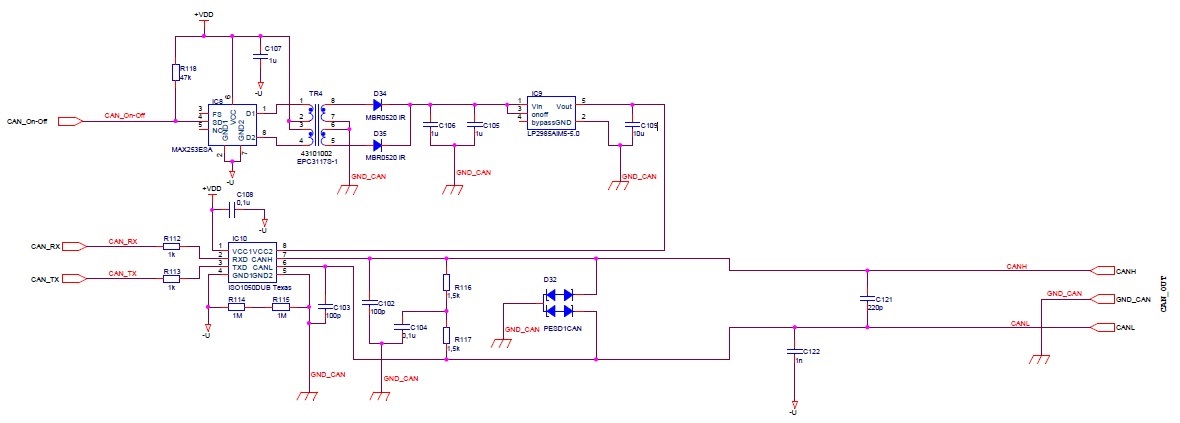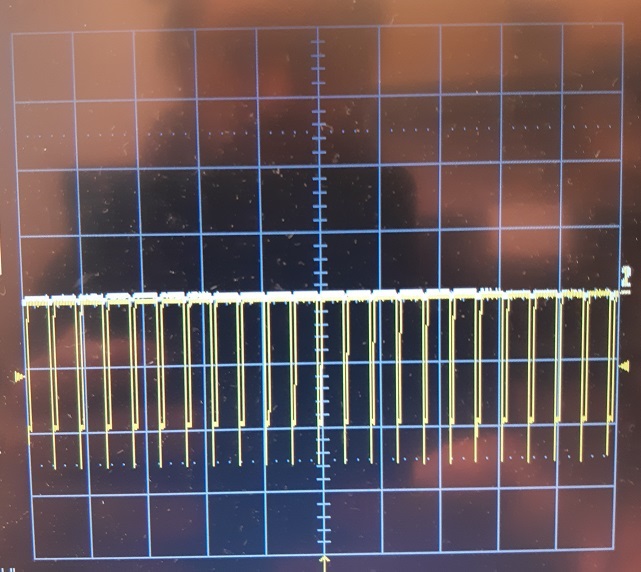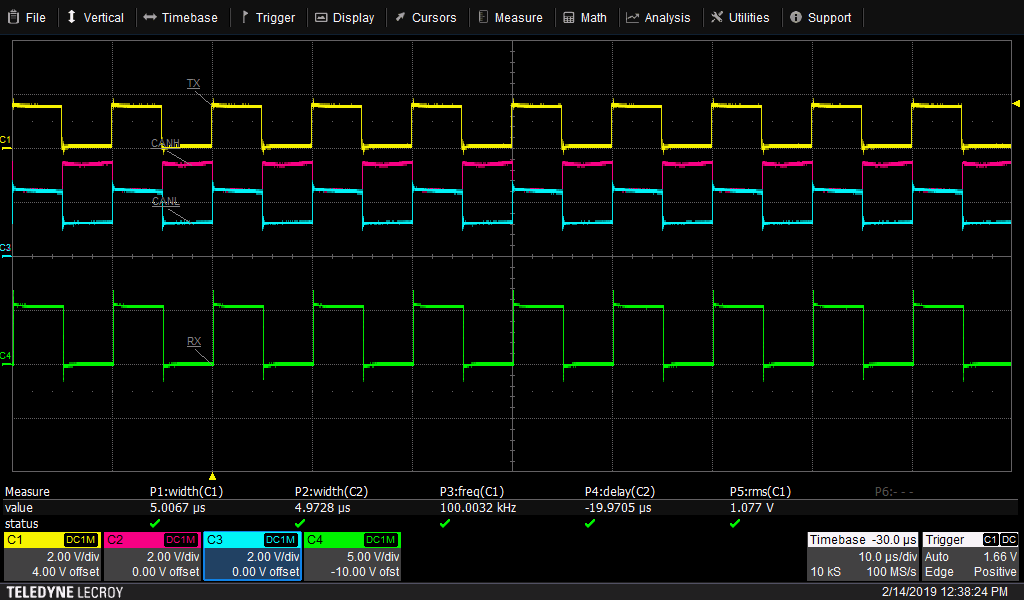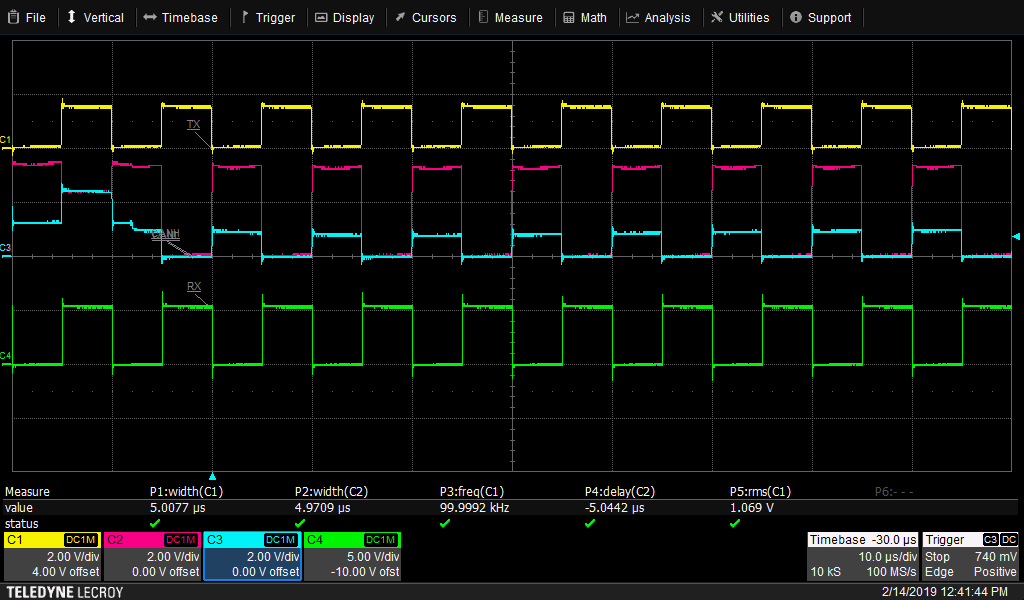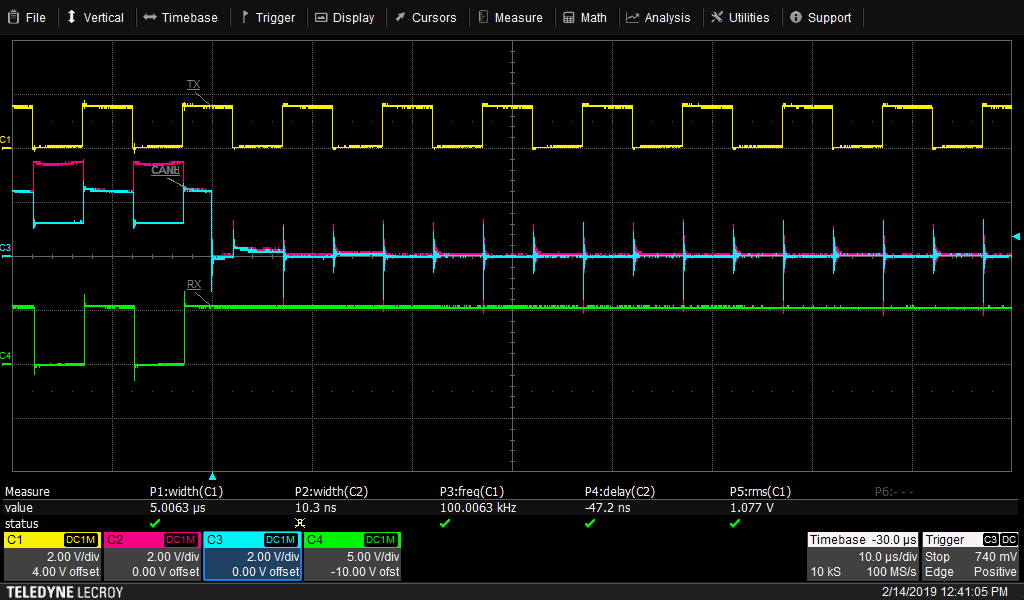The majority of our units work correctly, but we've had a few units where the CAN bus signal sort of collapses when one of the outputs is connected to an external ground. Below is the output from one unit with the oscilloscope ground connected to CAN_H:
And here is the same unit with oscilloscope ground connected to CAN_L:
I can not find any fault with the passive components. Can this be caused by the ISO1050?


